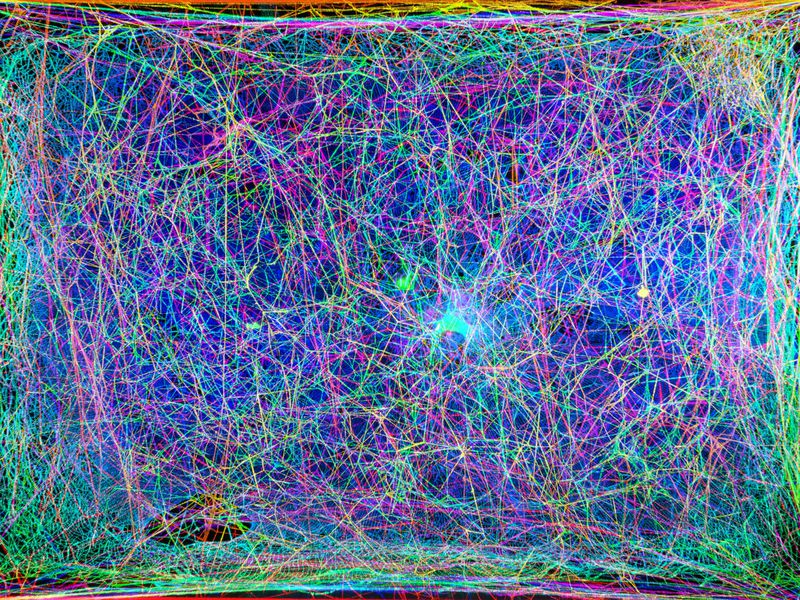Spider fans are making music…using the webs of their eight-legged friends!
Not actual webs, but virtual ones. Prof Markus J. Buehler of the Massachusetts Institute of Technology (MIT) is in charge of a project turning the creepy crawlies’ webs into compositions.
From spider webs to spider music
How does it work? The team, including artist Tomás Saraceno and doctoral candidate Isabelle Su, brought in a tiny collaborator…namely Cyrtophora citricola, or the tropical tent-web spider.
As the arachnid worked on its web, a crosssection was laser-scanned in 2D. An algorithm then spun that out in computer form, creating a 3D version.
So far, so intriguing. But wait a minute, why base an instrument on a web in the first place?
The answer lies in spider vibes. Spiders are industrious but don’t see too well. Their world is dark but full of vibrations delivered to them through the strands of their extraordinary home turf.
As Buehler told Vice, “When you see the structure of a spider web, it reminds you somewhat of a harp or a stringed instrument.” The connection between web builders and music producers is closer than it looks.
Spiders pick up these vibrations and even produce their own, tapping the strands and communicating with their own kind.
What better way to get a spider’s eye view than to weave your own musical web? Prof Buehler and company worked out a frequency for each strand. When it came to the sound it was going to make, however, creative license had to be taken.
How does it sound?
For starters, each frequency needed to be heard by the human ear. And what does a spider web sound like, anyway? As reported by New Scientist, the team used “a synthesizer with a harp-like sound” for their spidery symphony.
Having devised this (arguably) unique contribution to music, what are experts going to do with it? Start jamming of course!
Reportedly, the web has entertained audiences on several occasions. And a VR option gives people an up close and personal view, delving deep into the spider-verse.
The cutting-edge setup — not one for the bug-averse perhaps — sees musicians and others venturing into the heart of the web where they can pluck out a tune. Pictures reveal a look that’s somewhere between Tron and Arachnophobia.
Quoted by the American Chemical Society, Buehler sang the praises of this immersive experience. A user’s ears apparently “pick up structural features that you might see but not immediately recognize.” Sound and vision together make all the difference, ensuring the results are as coherent as possible.
The Society hosted these findings during a press conference earlier in the month. Could spider web concerts be a thing once lockdown ends? Will the world witness Bruce Springsteen reach no.1 with the help of Itsy Bitsy?
Quite possibly. But Buehler sees possibilities beyond musical enjoyment. As he explains via the Society, this web analyzes the “temporal sequence of how the web is being constructed in audible form.”
Other possible uses
What does that mean? Essentially, the intricate nature of a spider web is light years ahead of human construction. If people could master such an approach then tech such as 3D printers would become a whole lot quicker to build.
The professor also mentions the bizarre option of trying to talk to spiders in their own tongue. Well, they communicate via their legs. But the principle might be sound.
More creepy crawlies: Artist creates brilliant insect sculptures from old computer components
Should that not work out, then the instrument can still be used to create some fascinating music. It isn’t exactly what a spider’s life is like, but it’s surely the next best thing. Decades after Ziggy Stardust introduced the Spiders From Mars, a worthy successor has been found.
Helping Buehler, Su, and Saraceno make this spider music are organizations such as the Office of Naval Research, the Army Research Office, and the National Science Foundation. This is high-level stuff, and it all began with a little spider weaving its web…
